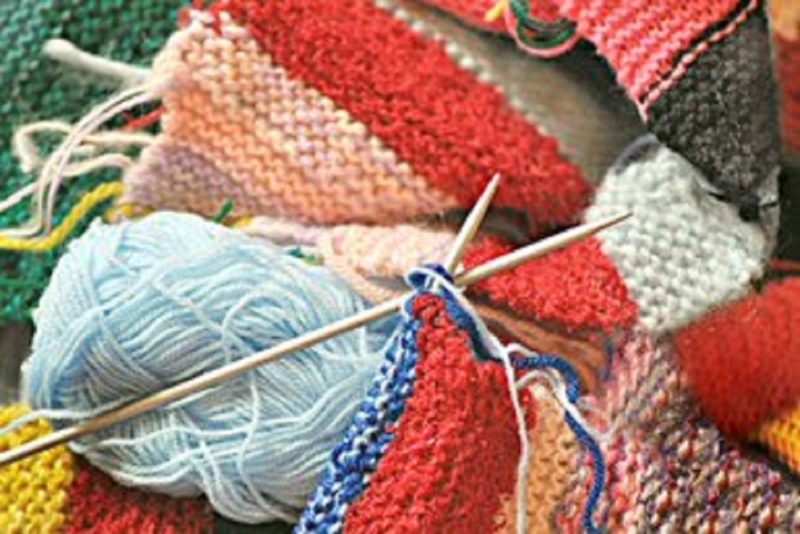By NEIL BROOM
Although never having mastered the craft of knitting, I am the grateful recipient of a magnificent hand-knitted winter jersey, courtesy of my wife’s stellar knitting skills. The project commenced early during the first Covid lockdown in 2020 and was completed in time for this year’s chilly winter.
Quizzing my wife during the course of the jersey’s creation, I began pondering over the concept of a knitting pattern. Can it be likened to a cooking recipe, which lists an exact set of steps to be followed in correct sequence, leading hopefully to say a tasty cake? A slightly posher name for the instructions comprising such a recipe is the word “blueprint”.
Now if a blueprint type of recipe or pattern was used to knit, say, my winter jersey, it would have to specify, for example, every single knit, purl, slip and cast operation for every individual row. For non-knitters, these somewhat odd terms describe different wool connecting or stitching methods using the needles to “grow” the garment row by row. Given the many hours of knitting that it took to produce my jersey, the size of the pattern, if it were a blueprint, would have been enormous, running into many pages of instructions. However, the pattern that was actually used occupied barely more than a single page. So somehow all the essential information had been squeezed into a much smaller space without the loss of any knitting instructions.
In fact, a knitting pattern is not a recipe or blueprint. Rather, it has the form of a precise, but highly-compressed, set of instructions written in coded form. The technical name for this instruction type is “algorithm”. Instead of specifying every single stitching operation in each row, the algorithm might, for example, specify “knit, repeat one hundred times”, or “knit one, purl two, repeat thirty times”, and so on.
Further, if any of the rows are required to be identical, a single instruction specifies the number of repetitions of that row, thereby shortening greatly the length of the pattern.
Now imagine having to knit two jerseys, one twice the size of the other. If a blueprint pattern were used, the size of the knitting instructions for the larger jersey would need to be around twice that for the smaller jersey. However, because all knitting patterns are in the form of an algorithm, a single doubling instruction is all that is required. This then keeps the patterns for the two different-sized jerseys the same length.
Well, the algorithm-type pattern seems to be the way to go. But are there any disadvantages? Any experienced knitter knows that, if the pattern say specifies “knit, repeat one hundred times”, but it is misread as “knit, repeat ten times”, this single mistake would have disastrous consequences for the shape of the completed garment. Much tedious unstitching is then required. Contrast this with a single misread of a blueprint knitting pattern for the same garment. The mistake would amount to a single discordant stitch and thus go largely unnoticed.
What should now be obvious is just how much more slick and efficient is the algorithm method for storing, copying and communicating crucial information, compared to a recipe or blueprint type of pattern. But what has all this got to do with working our way towards the mind of the Creator?
Well, when it comes to the living world, we know that the biological cell employs a highly sophisticated communications system. It is able to transfer, at high speed, enormous amounts of complex information from the genetic library to the cell’s manufacturing apparatus. With this information, the cell is able to perform all those life-promoting tasks such as the construction of vital body-building components. The sheer complexity of this communication system within the cell, and its efficiency of operation, suggest that it functions more like an algorithm than a recipe or blueprint.
Further, just as minor errors in a knitting algorithm may result in massive distortions in the final form of the garment, so living organisms may similarly exhibit gross malformations and pathologies when their genetic material is damaged by radiation or other toxic agents. Again this is entirely consistent with the communication system in the cell being algorithm-based.
But algorithms don’t come cheap, and this is so whether we are considering a knitting pattern or the information system operating in our body’s living cells. The former is always the expression of an ingenious and wonderfully artistic human mind. And it is not hard to believe that the information system operating in every biological cell bears witness to a profoundly clever and creative mind – the mind of God.
- Neil Broom is an Emeritus Professor in the Faculty of Engineering, University of Auckland, and has a particular interest in the relationship between science and faith.

Neil, you have over thought this by a country mile. Knitting is about peace and prayer. Simple as that.
Every knitted garment I have knitted over the years , and there have been many, has been full of prayer for the recipient.